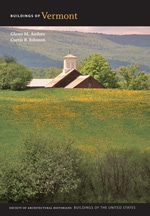
William Carnes got his start in the granite cutting and polishing business in 1879, working with his father in a shop on the upper Stevens Branch of the Winooski River near quarries on the east side of “Millstone Hill.” By 1889 the Carnes and Kane shop had twenty employees in what had become known as “Carnes Mill,” a hamlet consisting of the stone shop, sawmill, schoolhouse, and a half-dozen houses. In 1893, the East Barre Railroad gave the hamlet a new name as it connected the quarries to shops along the Stevens Branch. That same year, during a lockout to drive down wages followed by a strike to maintain them, Carnes was one of only two owners who opened his shops to the strikers, many of whom also began their own granite sheds in East Barre. Although Carnes's mill is long gone, his progressive concern for his workforce extended to this pair of fourplexes he built during the boom years on the street that bears his name. Unlike most of the plain, boxy tenements that entrepreneurs built in Barre City and around the quarries to house the flood of immigrant granite workers moving to the area, these twin four-family units feature double mansard roofs sheathed in slate and commodious two-story Queen Anne front porches. In quality and detail they out-shine those seen on many private houses in the area.

